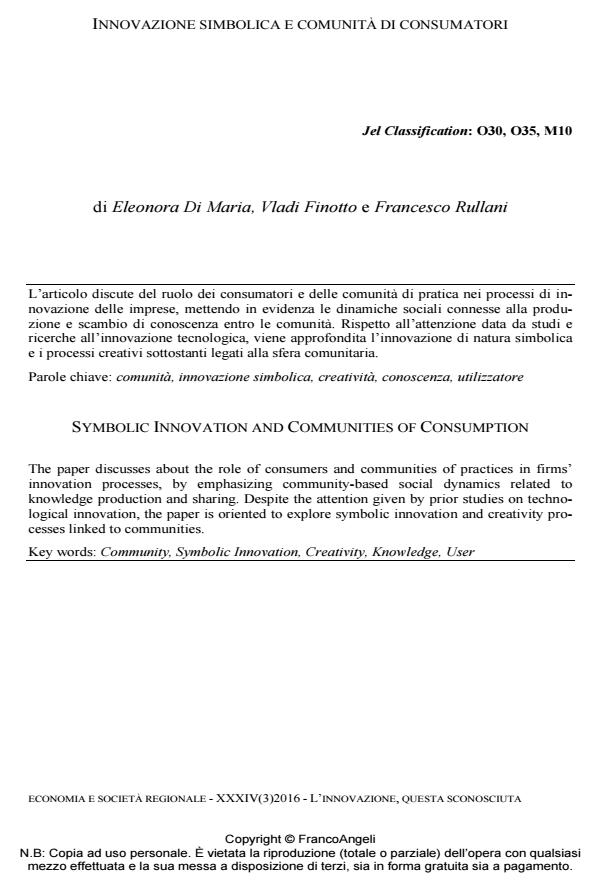Symbolic innovation and communities of consumption
Journal title ECONOMIA E SOCIETÀ REGIONALE
Author/s Eleonora Di Maria, Vladi Finotto, Francesco Rullani
Publishing Year 2017 Issue 2016/3
Language Italian Pages 10 P. 38-47 File size 219 KB
DOI 10.3280/ES2016-003003
DOI is like a bar code for intellectual property: to have more infomation
click here
Below, you can see the article first page
If you want to buy this article in PDF format, you can do it, following the instructions to buy download credits

FrancoAngeli is member of Publishers International Linking Association, Inc (PILA), a not-for-profit association which run the CrossRef service enabling links to and from online scholarly content.
The paper discusses about the role of consumers and communities of practices in firms’ innovation processes, by emphasizing community-based social dynamics related to knowledge production and sharing. Despite the attention given by prior studies on technological innovation, the paper is oriented to explore symbolic innovation and creativity processes linked to communities.
Keywords: Community, Symbolic Innovation, Creativity, Knowledge, User
- Innovazione e piccole imprese: dimensioni e prospettive analitiche Giorgio Gosetti, in SOCIOLOGIA DEL LAVORO 147/2017 pp.59
DOI: 10.3280/SL2017-147004
Eleonora Di Maria, Vladi Finotto, Francesco Rullani, Innovazione simbolica e comunità di consumatori in "ECONOMIA E SOCIETÀ REGIONALE " 3/2016, pp 38-47, DOI: 10.3280/ES2016-003003